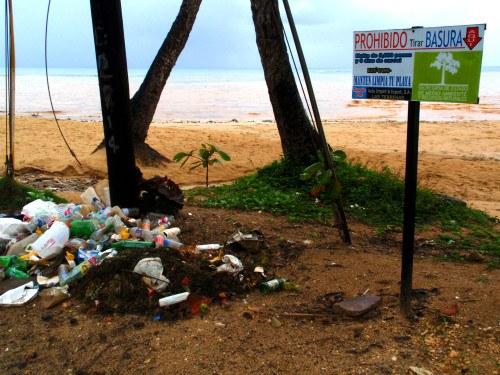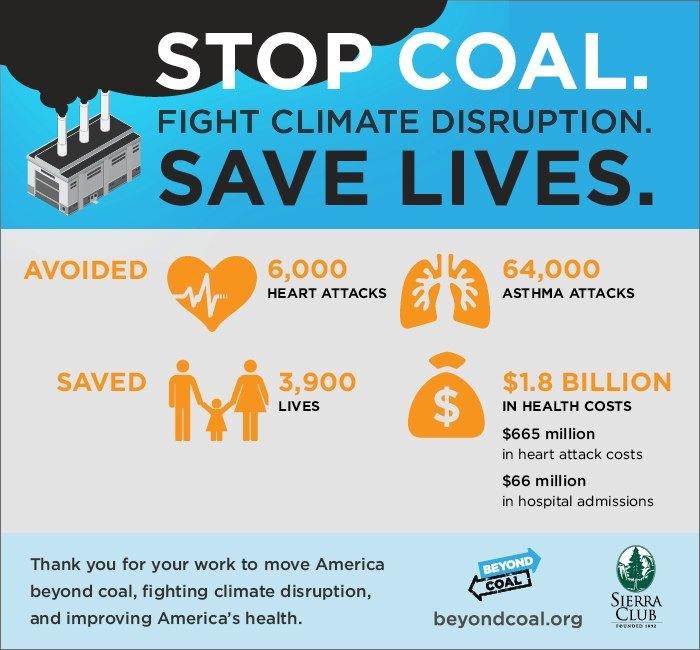Canada’s Humanitarian Sector Gears up to Adapt and Innovate


By Ruchika Arora
Adaptation. Innovation. These two words are usually associated with the private sector. It’s a well-practiced mantra that business, management and employees must adapt and innovate in order to thrive in the frenetic global marketplace. Now there are signs that the humanitarian sector is cautiously following suit.
Made up of non-governmental organizations (NGOs) that deliver aid and assistance during human-made and natural disasters, the sector is vast. Ironically, it’s also at a crisis point: It not only faces more demands on its resources, but more complex problems related to climate change, conflict and extremism that simply have no easy solutions. To weather these changes, the Canadian humanitarian sector is coming together to learn how adaptation and innovation can improve its ability to respond effectively to the record number of people in need of assistance.
The second annual Canadian Humanitarian Conference, held at the Aga Khan Foundation of Canada in Ottawa from Dec. 4-5, was the result of intense collaboration led by the Humanitarian Coalition and its five core member NGOs: Care, Oxfam Canada, Oxfam Quebec, PLAN and Save the Children. Founded in 2007, the the coalition “brings together Canada's leading aid agencies to finance relief efforts in times of international humanitarian crises”; it calls itself a “one-stop shop” for individual Canadian donors. The conference is also emerging as the one-stop shop for Canadian humanitarians to meet and exchange knowledge and know-how; yet, it’s also where humanitarians can build relationships with practitioners from vastly different sectors that wish to support humanitarian goals.
Accordingly, cross-sector collaboration was a recurring theme of the conference. As experienced as they are, humanitarian organizations can still afford to learn from the private sector. Assembled for the second opening plenary, delegates heard Valerie Amos, U.N. Under-Secretary-General for Humanitarian Affairs & Emergency Relief Coordinator, declare: “We must reform.”
Humanitarian workers restore lives and dignity, Amos reassured delegates, but changes in the world demand that the sector reform itself to stay relevant. As she pointed out: Over the last 10 years, the number of people in need of humanitarian assistance has tripled; displaced people spend an average of 17 years in displacement; attempts to politicize humanitarian work has become all too common; and, finally, women and children are the face of the crisis. Inviting businesses to help it respond better to emergencies by sharing “resources, expertise, and technology," the conference would put the Canadian humanitarian sector on a path of genuine adaptation and innovation that -- one hopes -- results in greater, sustained impact on people’s lives.
I’m not a humanitarian worker. I’m a budding sustainable development researcher who wishes to understand why humanitarian crises happen in the first place; that’s a challenging task. However, the sectors are undeniably linked as both pursue an international development agenda that aims to basically improve people’s quality of life. Of course, this aim is highly political as everyone will not agree on what constitutes “quality of life.”
I attended the conference to learn how my colleagues, bound by the humanitarian principles of humanity, impartiality, neutrality, and independence, perceive the impact of their work. There is no question that we both wish crises could altogether be avoided. The reality is that we are both - researcher and practitioner - needed to help untangle the problems and identify root causes. There remains a development-humanitarian divide that needs to be bridged.
The cross-sector partnership panels provided highly interesting perspectives on how NGOs can deepen their collaborations with urban planners and engineers, on the one hand, and corporations like MasterCard and Ericsson, on the other. Panelists demonstrated respect and openness yet remained grounded. Reminding delegates that NGOs possess “reputational capital,” Rosemary McCarney of PLAN Canada warned that they would need to choose partners wisely if they wished to protect that capital. The issue of mutual benefit is central to these partnerships, perhaps more so if businesses wish to do more than offer cash donations. Sorting out those benefits shouldn’t serve as an obstacle to working together though it might mean that trust and understanding among partners needs to be built up first. This inevitably takes time and perseverance as misunderstandings surely will occur; however, if CHC2014 is any indication of the humanitarian sector’s desire to reform, it will, in due course.
The conference energized delegates, many of whom were returning to the field that very week. We should see the dynamic conversations begun inside the conference hall develop outside, where, let’s face it, adapting and innovating really matter. The CHC, in spite of being just 2 years old, is creating the foundation for a new chapter in the decades-long story of Canada’s contributions to the global humanitarian system. Canadians should be proud that their NGOs see generous collaboration as the way forward.
Ruchika Arora is a former activist-teacher trained in the International Baccalaureate system. In 2013, she took the bold step of launching a freelance writing and research career whilst enrolled as an MSc sustainable development student with the Centre for Development, Environment and Policy at the School of Oriental & African Studies (UK). Ruchika is presently involved with strategy development for the Toronto Sustainability Speaker Series. She is keen to see how the private sector expresses its commitment to genuine sustainability in Canada and abroad. Ruchika is also an Associate at Open Spaces Learning, a Canadian change management firm helping companies realize business and social impact. Twitter: @Oh_Womyn. @OpenSpacesLearn
Photo Gallery: Levi’s Turns Donated Denim into Field of Jeans


If you build it, they will come. In this case, the “it” was a series of bright red drop-off bins installed at Levi’s Stadium in Santa Clara, Calif. on Nov. 2 – set up by the iconic jeans maker and Goodwill to collect enough old denim to cover the stadium’s field and build a “Field of Jeans” to bring attention to the enormity of the country’s textile waste.
And, true to the famous movie quote, they did come. Fans who gathered to watch the San Francisco 49ers play the St. Louis Rams brought old pairs of jeans and other unwanted pieces of clothing to donate, as did Bay Area residents who dropped off their used apparel at Goodwill stores as part of the two-week campaign. In exchange for their donation, participants were rewarded with a special Levi’s discount coupon.
Altogether, the used clothing drive collected more than 18,850 pairs of jeans – 12 tons of denim that otherwise might have ended up in the landfill. The unwanted jeans saved from the dump also prevented 171,000 pounds of carbon emissions from being released into the atmosphere – the equivalent of the pollution emitted from driving a car from San Francisco to New York for 36 round trips, Levi Strauss & Co. (LS&Co.) said.
Twelve tons of material kept from the landfill and 171,000 pounds of carbon emissions: A pretty big collective achievement from individual clothing donations, no? That’s exactly the message that LS&Co. wanted to convey when the company commissioned San Francisco-based artist Hannah Sitzer of Antlre Creative to transform the donated denim into a “Field of Jeans.” It took her and more than 50 helpers over 16 hours to construct a giant recycling symbol at Levi’s Stadium that LS&Co. said represents how the small, simple act of donating clothing can have a tremendous impact on the U.S.’s staggering amount of textile waste.
“The ‘Field of Jeans’ initiative is another way we are encouraging consumers to think differently about their jeans,” said Desirae Early, LS&Co.’s manager of sustainability strategy and innovation. “In 2009, LS&Co. launched the Care Tag for the Planet, encouraging consumers to wash less, wash in cold, line dry and donate when no longer needed to help chip away at the 26 billion pounds of textiles that end up in landfill every year [in the U.S.]…The images and video of the ‘Field of Jeans’ will be critical to continuing this consumer education about the big impact they can make by choosing to donate their used jeans instead of throwing them away when no longer needed.”
Indeed, LS&Co. has been promoting its “Field of Jeans” display to media outlets, on social media and on its blog Unzipped as way to encourage consumers to donate, rather than toss, unwanted clothing. And in its “Field of Jeans” video, the company reminds consumers of all the basic tenets of its Care Tag for the Planet, in addition to donating old apparel: wash less, wash in cold water and line dry.
In keeping with the theme of giving old clothes a second life, after the “Field of Jeans” was disassembled, all pairs of jeans were sent to LS&Co’s partner Goodwill for sorting and reselling.
LS&Co.’s “Field of Jeans” isn’t the first visual representation of our country’s waste stream: Artist Chris Jordan’s pieces beautifully express our overwhelming consumption and disposal statistics, and, in another corporate-sponsored example, Glad Products Co. commissioned a photo series on individual family’s trash habits. But, unlike this other artwork, the “Field of Jeans” focuses on the positive – the actions we can all take to make a difference (in this case, donating clothes) – rather than the problem (the 26 billion pounds of landfilled textile waste each year). And, although both Jordan’s work and Glad’s photo series are very important to promoting environmental awareness, seeing a piece of art with an encouraging, constructive message is, frankly, a breath of fresh air.
[gallery ids="200094,200096,200097,200098,200099,200100,200102,200103,200104"]
Image credit: Jed Jacobsohn, Getty Images for Levi Strauss & Co.
Passionate about both writing and sustainability, Alexis Petru is freelance journalist and communications consultant based in the San Francisco Bay Area whose work has appeared on Earth911, Huffington Post and Patch.com. Prior to working as a writer, she coordinated environmental programs for Bay Area cities and counties. Connect with Alexis on Twitter at @alexispetru
JetBlue Seeks Sustainability Data to Clean Up the World’s Oceans


JetBlue has been in the news a lot lately for its announcement that generous leg room and free checked bags will be a thing of the past, but at least this popular airline could make progress on another front. Last week the company, partnering with the Ocean Foundation, released a report that links ecosystem sustainability and revenue.
Much of JetBlue’s business relies on vacation travelers who venture to the Caribbean. Arguably, locals benefit from the influx of tourists as well, though whether local economies can really stay resilient is open to debate. What is not open to debate is that along with American and Canadian dollars, euros and pounds comes heaps of trash. According to The Ocean Foundation, that is 100 million pounds of garbage annually, which often ends up in local water streams, dumps and of course, the sea. With tourism only increasing—especially with the lifting of the U.S. embargo on Cuba—there is a risk that increased environmental degradation could cause an economic drag on the region as well.
With almost 90 percent of trash in the Caribbean traceable to the tourist sector, something has to be done. Almost two years ago, JetBlue and The Ocean Foundation started a partnership to see whether there was a connection between nature (as in clean beaches) and RASM (industry revenue per available seat mile). Many variables were considered, including health coral and mangroves, water quality and clean beaches.
Cutting through the jargon, while the study could not determine a definite causation, researchers did find a strong correlation between some environmental factors and the airlines’ favorite metric, RASM. Mangrove health actually showed the strongest correlation, which should not be too surprising when considering they serve as an important filter along with any wetlands ecosystem. Beach trash was a close second: nobody wants to be surrounded by beer cans and cigarette butts, though tourist literature does a pretty good job photoshopping those out before they are published online and in brochures. Water quality came in at number three.
What does this all mean? One bane of the environmental movement is that it has always been difficult to assign quantitative values to qualitative arguments. Sure, one does not need to be a scientific whiz to understand that water depletion, coral reef destruction and excess trash are long term threats to businesses both local and multinational. Businesses are already starting to take environmental threats more seriously—but more reliable data is needed to make the case to those who make decisions based on what they see in a ledger. But advocates who are passionate about cleaning up our oceans also admit solid data on how much trash is out there is still relatively sparse. The Ocean Foundation wants to build on this effort and also tie it revenues in other segments of the travel industry—hotel revenues could be the next focus of research.
To those within the environmental movement who have a take-charge approach to cleaning up the oceans, such a study with a result that calls for more studies may not elicit much more than an eye roll. But if more rigorous data can really help us understand the financial impact of our collective trashing of the planet, more research similar to what JetBlue and The Ocean Foundation are churning out could pay more dividends in the long run.
Image credit: JetBlue via Jackie Marks Marine Photobank
After a year in the Middle East and Latin America, Leon Kaye is based in California again. Follow him on Instagram and Twitter. Other thoughts of his are on his site, greengopost.com.
Finally, A Health Insurance Company That Rewards Healthy Choices


Insurance companies for years have done a nice job penalizing customers who make bad health choices, as in excessive eating, drinking and especially smoking. That has changed slightly under the new insurance plans sold here in the U.S. due to the new health care laws, but for years the penalty was higher premiums if a customer had pre-existing conditions tied to bad health habits.
From a business perspective, this made perfect sense. Fundamentally, insurers are really not that different from other businesses—it is always easier, and maybe the logical financial choice in the short term, to penalize rather than reward. But for those of us who eat right, avoid tobacco, spend some of our free time exercising, and make other positive health choices, it often does feel as if we are subsidizing others for their poorly thought out life choices. Oscar Insurance, a New York-based start-up, is trying to change to transform the health insurance industry by encouraging healthy decisions. And if their business model pans out, they could become quite profitable.
For now the key for Oscar Insurance is to encourage its customers to move. Buoyed by medical research that suggests walking about 10,000 steps a day is one of the best ways to keep off the weight and ward off health problems including high blood pressure, members of the company’s insurance plans have an incentive to get healthy.
Customers can download an app monitoring their daily steps and can receive a Misfit Flash Fitness Tracker wristband in the mail that syncs once it is put on. Every day, that customer can score $1 for reaching his or her goal. Oscar Insurance promises their members they can score up to $240 annually—not a bad sum for something we all should be doing anyway. For someone whose exercise routine does not extend much farther than walking from the sofa to the fridge, this program can be tailored individually—after all, the worst way to start an exercise regimen is to set unrealistic goals right away. Start off with a thousand or so steps and move upward.
Oscar Insurance plans other benefits to for those who are proactive about their health. Free check-ups, generic drugs and flu shots are also on offer. For those who want to do more than walking, the company also offers incentives for those who belong to the gym or indulge in yoga. Such moves are certainly going against the grain in this sector—one long standing critique of the U.S. health system is that it is more of a sickness management system than one that encourages smart and healthy decisions. Encouraging members to take their health into their own hands can only lower costs in the long run—preventive screenings and exercise can keep us out of the doctor’s office, for which is what a profitable health care company should aim, and aim highly.
A quick quote shows Oscar Insurances plans are comparable to similar plans in New York. Bronze plans with higher co-pays and deductibles start at $342 for a man in his, ahem, prime, while a platinum plan with a $1,000 maximum patient spend is $572—those rates are without Affordable Care Act premiums.
For those of us in California whose choices only include Blue Cross and Kaiser, the question we have on the Left Coast is: when is Oscar Insurance venturing out west?
Image credit:Misfit.com
After a year in the Middle East and Latin America, Leon Kaye is based in California again. Follow him on Instagram and Twitter. Other thoughts of his are on his site, greengopost.com.
The Secret Side of Business Sustainability


By Hannah Corbett
When it comes to making your business sustainable, there are a few different definitions. It could refer to long-term financial sustainability, or even cultural and social sustainability. But here, we refer to a business’s sustainability as its ability to operate in an environmentally friendly manner.
The key to sustainability, of any kind, is being mindful of ill effects in the future while still achieving what is required in the present. In environmental terms, this means a business being able to grow, profit and thrive as it should, while minimizing its footprint and the negative effect it has on the environment.
Now the concept of ‘greening’ a business is not a new one – there are plenty of environmentally friendly companies out there that engage in green practices every day, and have sustainability at the core of their business and work ethics. And it’s not difficult to come across all the usual advice for areas you can address to green your own business: energy saving technology, waste management and recycling, supporting sustainable technologies – the list goes on.
But, there are certain elements of virtually every business that can have a negative impact on the company’s sustainability, which many business owners often overlook. If you’re looking to improve your business’s sustainability, and reduce the effect it has on the environment, then you may want to consider investigating the following areas:
Risk management
If your risk management is outdated or un-optimized, then it could actually be decreasing the environmental sustainability of your business. Business risk management is about preparing for things going wrong, and being able to cope if and when they do. If your risk management plans, methods, techniques, etc, aren’t 100% accurate, then there’s a chance that they are not as efficient as they could be. This could affect your business’s sustainability.
For example, if you over-plan for the event of a given crisis, you could end up wasting resources unnecessarily. If you under-compensate, then you may have to source additional support last minute, from less sustainable causes than you would otherwise.
It’s surprising how many business owners conduct a business risk assessment once, and then expect this to always be accurate and adequate. Your business’s risk management - whether it’s for insurance or investment - should be an on-going process that changes and develops with your business. Keeping on top of it and constantly reviewing and updating it can help to keep your business’s environmental footprint to a minimum, and could also save you money, too.
Financial planning
Similarly to risk management, your financial planning should always accurately reflect your business and its structure. As your business grows and develops, your financial planning needs to be thoroughly scrutinised in order to maintain optimum efficiency. Both waste and excess are detrimental to environmental sustainability. To minimize your business’s impact on the environment, you need to spend take the time to put proper thought and effort into accurately representing your business, its capabilities and its requirements.
Your supply chain
Try and investigate your supply chain, as far back as you possibly can. Try and source everything that your business needs from other sustainable businesses. This may take a little legwork, but it can be achieved. Making phone calls and enquiries to find out about the ethics of other business that you are thinking of buying from can give you peace of mind that you are no inadvertently cancelling out all the good green work that you do. By supporting non-sustainable businesses, your own automatically becomes less green.
For example, let’s consider a shop. The shop’s building is fully retro-fitted for maximum energy efficiency, electricity is sourced from renewable technologies, the products sold are all recycle-ably packaged, and the business only invests in sustainable marketing techniques. But, the supplier that the shop sources its products from is completely non-sustainable. By supporting this supplier, most of the shop’s green efforts are overshadowed by the enormous footprint of the supplier.
Your staff
Believe it or not, your staff could be increasing the size of your business’s footprint without you knowing it. Business owners often don’t consider the habits of their staff when they think of ways in which they can green their businesses, but addressing your workforce, and encouraging them to make small changes to their work ethic can really help your eco-friendly efforts.
How do your staff get to work? If you find that many or most of them drive their own individual cars, consider setting up a carpooling scheme and highlight the rewards of lift sharing. You could even offer rewards to those that regularly do carpool. Make sure that your staff are mindful of usage and consumption while in the work place, e.g. of using too much paper, leaving lights on when not in a room, etc.
Actively encouraging and promoting a sustainable culture in the workplace, and making eco-friendliness a habit, has the potential to serious reduce your business’s overall effect on the environment.
When you have taken the steps that you deem to be necessary in increasing your business’s environmental sustainability, there is one more thing left to do: shout about it. If you are actively trying to reduce your waste and consumption, increase efficiency and reduce your business’s footprint – let people know about it. You can gain valuable market leverage and really boost your business’s reputation among your target audience.
Be sure that you detail exactly the ways in which your business is sustainable, and let people in on the steps you take to green your business. You need to be careful that your business does not get branded as a ‘greenwasher’, which is someone who markets and brands themselves as eco-friendly, but in fact is not. Telling the facts, and giving your audience specific examples of your sustainability efforts should be sufficient to avoid this, though. If you’ve put the effort in, make sure people know about it, so they can appreciate it.
So, even if you think you have exhausted all the options for maximising your business’s sustainability factor – there is always something that can be tweaked or optimised. After taking the more basic steps to green your business, you should start to explore more covert, operational elements of your business’s every day operation. You can take some of the above points as a starting point, or find your own. Either way, there is always something more that you can do to green your business, and boost your sustainability.
Image credit: InnovaStrat
Hannah Corbett is a writer and content marketer for Make It Cheaper: the business saving experts. She is passionate about energy efficiency and sustainability, and dedicates much of her time to writing about green measures and technologies. You can connect with Hannah on Twitter or Google Plus, or visit Make It Cheaper for more on business energy.
EPA's Historic Coal Ash Disposal Rule Not Enough, Watchdogs Say


The U.S. Environmental Protection Agency (EPA) on Friday afternoon, Dec. 19, for the first time in U.S. history issued a federal rule governing the disposal of coal ash nationwide. With some 140 million tons left over from combustion of coal to generate electrical power, coal ash is the second largest industrial waste stream in the U.S. Up until today, it has been left up to state governments to regulate storage and disposal. In effect, public health and environmental groups point out, there has been less regulation and monitoring of coal ash than household waste in the U.S.
While welcoming the EPA's action, environmental groups say its initial rule won't do nearly enough to safeguard human and environmental health and safety. “While EPA and the Obama administration have taken a modest first step by introducing some protections on the disposal of coal ash, they do not go far enough to protect families from this toxic pollution,” Mary Anne Hitt, director of Sierra Club’s Beyond Coal Campaign, was quoted in a statement. “We welcome federal efforts on this issue, but Sierra Club has significant concerns about what has been omitted from these protections and how they will be enforced in states that have historically had poor track records on coal ash disposal."
A running, decades-long battle
A nationwide study by the EPA, along with a series of toxic spills – including one in Tennessee in 2008 that was deemed one of the largest environmental disasters in U.S. history – galvanized public action.
When it comes to coal ash disposal and storage, “states have spotty to no regulations or effective enforcement,” Dalal Aboulhosn, Sierra Club senior Coal Ash representative in Washington, D.C., told 3p in an interview. “They really are failing their citizens.” Federal regulatory standards for coal ash disposal and storage are long overdue, she continued. “This will at least set some federal safeguards across the country.”
Coal ash contains a toxic mix of chemical elements, heavy metals, and compounds that includes arsenic, cadmium, chromium, lead, mercury selenium, other radioactive elements and known carcinogens that can result in a variety of serious illnesses, premature deaths and birth defects. People have been well aware of the potentially toxic and lethal effects of coal ash on living things, as well as on our land, water and the atmosphere, since we began burning coal.
Opposed by coal mining companies, labor unions and power utilities, previous efforts to institute federal standards governing coal ash storage and disposal were rebuffed.
The political calculus – at least at the executive level – shifted abruptly in December 2008 when a dike at coal ash pond at the Tennessee Valley Authority's Kingston Fossil Plant burst, sending an estimated 5.4 million cubic yards of coal ash cascading into the Emory and Clinch Rivers and over some 300 acres of land. As USA Today reported five years later, little had changed.
Documenting public health and environmental impacts
The Kingston Fossil coal ash spill merited a spot among Mother Nature News Network's top 10 worst U.S. environmental disasters. As MNN highlights in its summary of the disaster, the coal ash pond “contained a decade’s worth of arsenic, selenium, lead and radioactive materials. These metals can cause cancer, liver damage, neurological disorders and other health problems, but the EPA doesn’t classify coal ash as a hazardous material. As workers in Hazmat suits picked through the sludge, Kingston residents were told the ash didn’t present a serious health risk.”
Besides the profound, immediate impacts of large-scale spills, coal ash ponds and other storage/disposal sites pose constant, chronic risks, particularly in communities located near such sites. It's fair to say that coal mining and power utility executives don't live near such sites.
The Sierra Club joined with community, other environmental and public health groups in Earthjustice's 2012 federal lawsuit. That coalition included Native American tribes, such as Nevada's Mowapa Band of Paiute Indians. Swept by winds, coal ash from NV Energy's mammoth, 557-megawatt Reid Gardner power plant blows across their lands causing a variety of health problems, Sierra Club's Aboulhosn highlighted.
Coal ash is particularly hazardous when mixed with water, a common method of storage for the approximately 60 percent of coal ash in the U.S. that isn't recycled. That's why establishing a national standard for construction and regular monitoring of coal ash ponds has been one focal point for the groups awaiting EPA's final rule.
As the group Physicans for Social Responsibility highlights in a research brief:
“The toxic substances found in coal ash can inflict grave damage to the human body and the environment. These substances have been shown to escape from some coal ash disposal sites, contaminating the air, land, surface waters, and/or underground aquifers that feed drinking water wells...
"Many people are still not aware of how toxic coal ash is, or how much of it exists:
- Coal ash commonly contains some of the earth’s deadliest toxics: arsenic, lead, mercury, cadmium, chromium and selenium;
- The toxic metals in coal ash can leach out of ash disposal sites, especially from wet storage, and contaminate surface waters and underground aquifers, where they can cause cancer and neurological harm in humans and can poison fish;
- There are nearly a thousand sites at which coal ash is disposed across the nation: 584 surface ponds and 337 dry landfills. Coal ash disposal facilities exist in all the U.S. states except Rhode Island, Vermont and Idaho;
- Coal ash is the second-largest industrial waste stream in the U.S., after mining wastes.”
Spills lead to public calls for regulatory action
The Kingston Fossil coal ash spill galvanized communities, as well as public health and environmental groups, around the nation who had long been seeking stronger federal action to protect people and the environment from coal ash.
Earthjustice in April 2012 brought suit in federal court on behalf of such a coalition to spur EPA to take action as per its authority under the Resource Conservation and Recovery Act (RCRA). Finding in the plaintiffs' favor, a federal district court judge set a date of Dec. 19 for the EPA to issue a first-ever national rule governing coal ash disposal.
For all the public health and environmental damages coal ash storage and disposal has been wreaking, environmental groups including Sierra Club are of the view that deeming it a “hazardous waste” by federal standards would be counterproductive.
Categorizing coal ash as “hazardous” by federal law would eliminate the possibility of recycling it in the manufacturing of building materials and products. Along with public health and other environmental groups, Serra Club “supports encapsulation of coal ash, as in concrete, which locks up the heavy metals and prevents environmental leakage,” Aboulhosn told 3p a day before EPA was scheduled to issue its final rule.
“The problem is proposals to this point include 'beneficial uses,' such as using coal ash for fertilizer, dumping it in old mine shafts and applying it on roadways as an anti-skid agent. We have great concerns about those.”“What we are asking for in a coal ash rule at a national level are basic safeguards for communities around these sites, such as pond linings and water monitoring. These are commonsense protections the industry should welcome and communities have been waiting for for decades.
As of Thursday evening, Sierra Club and other proponents were also looking for the EPA to address legacy coal ash disposal sites that continue to pollute. They were hoping to see requirements in the EPA's new rule that require remediation of all existing coal ash ponds.
As reported in the Huffington Post, the EPA's rules call “for the closure of active surface impoundments and landfills that 'fail to meet engineering and structural standards.' They will also require regular inspections of the structural integrity of surface impoundments at active sites ... as well as monitoring and cleanup of unlined surface impoundments that are found to be leaching into groundwater.”
Furthermore, they don't require clean-up or closing abandoned coal ash ponds. The EPA said it doesn't believe it has the authority to do so. In addition, “utilities will still be able to add more slurry to existing unlined ponds, as long as those ponds aren't found to be leaking or structurally unsound,” Huffington Post's Kate Sheppard points out.
The EPA's initial rule, Sierra Club says, doesn't go far enough to address the longstanding threat and damaging effects coal ash disposal sites pose to human and environmental health and safety.
“Some parts of what the EPA has handed down will provide useful tools for communities, like requiring groundwater monitoring and dust controls around coal ash sites and making that data available to the public, but we are disappointed that it allows utilities to continue disposing of coal ash in ponds and does not incorporate strong federal enforcement,” Hitt commented. "Today’s announcement still leaves people to largely fend for themselves against powerful utility interests that have historically ignored public health in favor of delayed action.
“Moving forward, Sierra Club and our coalition partners will use every tool available to strengthen this EPA safeguard, pressure state governments to do more to help communities suffering from ash pollution, and work with local residents to stand up to the utilities responsible for poisoning their water and air with this toxic industrial waste.
“Today was a step forward, but it was a step too small when considering the level of action needed to truly help those Americans living near these coal ash sites.”
*Image credits: Sierra Club Beyond Coal campaign
NHL Takes on Climate Change, Beyond the Rinks


Last week the National Hockey League announced that it is stepping up its sustainability actions through a new partnership with the energy services company Constellation. The new deal makes Constellation the official preferred energy provider for the NHL with a focus on improving energy efficiency at ice rinks and other facilities throughout the organization. The agreement also calls for Constellation to provide enough carbon offsets to equal the entire carbon footprint of the NHL for the upcoming 2014-2015 season, estimated at a whopping 550,000 metric tons.
That's all well and good as far as the NHL's near-term operations go, but if you take a closer look at the league's concerns, you can see how the long-term outlook for climate change demands a stepped-up response from the business community.
Climate change and encroachment
Before we get to the NHL, let's take a look at the big picture. We had an interesting conversation a couple of weeks ago with Rebecca R. Rubin, CEO and president of the environmental consulting firm Marstel-Day. The firm's extensive experience with military sustainability initiatives provides it with a bird's-eye view of the basic issue facing the military, and for that matter, many if not all businesses.
That issue is encroachment. Military operations deal with resource encroachment as a matter of longstanding concern over access to energy, water and other resources. Climate change has ramped things up to a new level.
Just consider, for example, how an increase in extreme and destructive weather events limits the opportunities for training and readiness, and you can see how the effects of climate change ripple deeply into operations.
The NHL and encroachment
The training issue is front and center in terms of the NHL's long-term concerns.
Getting the league's indoor professional facilities up to speed is just the tail end of a broader concern that extends outdoors, to neighborhood ponds and lakes where incoming generations of hockey players get priceless hours of early childhood training. As those local opportunities evaporate, it also threatens to shrink the pool of talent and the quality of talent.
In other words, water resource issues -- specifically, cold-climate water resources -- are a huge deal for the NHL, in addition to the energy management concerns it has with its indoor, controlled-environment facilities.
Business and encroachment
Now take a look at some leading sustainability businesses from the encroachment angle, and you can see how facilities management is closely entwined with broader sustainability concerns.
The interest of agriculture-based businesses in climate action is obvious, and that extends to products other than food.
One standout example is Levi-Strauss. The company's identification with cotton gives it a bottom-line affinity for improved water resource management, and Levi-Strauss has broadened that to embrace a "radical" new approach to corporate social responsibility issues that includes addressing environmental issues in local communities that host its supply chain.
The new NHL sustainability partnership
The new energy partnership becomes even more significant when you consider it in the context of the current off-the-cliff trend in oil prices. With this announcement (here's that link again), the NHL is making a clear statement that its interests as a business depend on broadly scaled climate action, not so much on fleeting bottom-line benefits.
The new partnership provides the NHL with a springboard to provoke change far beyond the organization and its facilities, as expressed by NHL Commissioner Gary Bettman:
"Our partnership with Constellation advances our commitment to promoting responsible energy use by the NHL, including our teams, our venues and our fans. Our sport was born on frozen ponds and relies on winter weather. Everyone who loves our game will benefit by taking an active role in preserving the environment and the roots of the game."
Sustainability and leadership
If your business is gearing up to grow its sustainability profile, note that the announcement was made by the highest level of leadership for the NHL, rather by than an NHL sustainability manager.
That's no accident. As a "visionary" voice for climate action in professional sports, Commissioner Bettman has probably learned something else that we picked up from our conversation with Marstel-Day -- namely, that leadership makes all the difference when it comes to effective action.
In our conversation, Marstel-Day's Rubin noted that while it's important for a business or organization to have a sustainability office, leadership has to make clear that sustainability is a foundational issue for the business as a whole, not just a "sustainability issue."
By that measure, it looks like the new partnership is destined to be a best practices model. In addition to the carbon offsets and working behind the scenes on energy efficiency measures, here's a rundown on some of the high-visibility actions planned for 2015 that will call Bettman's leadership into play:
NHL and Constellation will work together to promote efficient energy use throughout the League and at key events throughout the season, including the 2015 Bridgestone NHL Winter Classic, 2015 Honda NHL All-Star Game, 2015 Coors Light NHL Stadium Series and the 2015 Stanley Cup Playoffs. Constellation also will serve as presenting sponsor of NHL Live Powered by Constellation on NHL Network.
In addition to partnering with the Green Sports Alliance, the NHL has also partnered with the Natural Resources Defense Council to set goals and benchmarks for its groundbreaking 2014 sustainability report, so stay tuned.
Image courtesy of NHL.
Education for Success in the Sustainability Industry


By Martha Young
Education investment: Almost everyone does it through continuing education conferences, online courses or pursuing an advanced degree. Expanding skill sets is instrumental in career advancement and career transitioning. How does skill-building play specific to the sustainability industry? Whether you’re a millennial trying to break into the industry or a seasoned professional seeking a career change, there are clear education choices that are better than others.
Independent analyst firm Verdantix released its Global Sustainability Survey 2014 report in mid-November. The annual report aims to benchmark brand perception, awareness and engagement across sustainability business consulting and service firms. In a nutshell, the report shows the Big Four audit firms as the top resource known and used by companies pursuing a sustainable business strategy.
The education implication of the Verdantix results is finance. Auditing firms provide the financial business case to clients for pursuing or setting aside a given green initiative. Auditing firms possess skills in identifying measurable metrics, establishing baselines and determining returns on investment. A financial background is clearly the way to go if one is seeking to pursue a career in sustainability through an audit company.
CLEAResult is one of America’s fastest growing private companies, according to INC 500. This Texas-based sustainability consulting firm has offices across the U.S. and Canada, directly employing 1500 people and contracting with thousands of other professionals. In a conversation with Eric Stern, national operations director, he noted, “When looking for contractors, we primarily emphasize skill sets and specialties. For instance, we’ll look for certified HVAC specialists, electrical engineers or other licensed specialists depending on the specific project need in order to ensure customer satisfaction.”
Stern went on to explain why technical licensed specialists work best for CLEAResult’s business model and philosophy. “At CLEAResult, we look first to local workers to fill contracting and employment opportunities. These workers are vetted through trade associations, hold current technical licenses and have are rated with the local Better Business Bureau. The emphasis on local workers adheres to our philosophy of helping to build integrated communities. The benefits of this model ripple out to independent contractors, small businesses and home owners. More importantly, the fact that CLEAResult utilizes local labor means that we support one of the key drivers of community-specific economic viability.”
The education implication for CLEAResult contract workers is vocational training and licensing. The firm’s management team biographies point to educations in business, management and marketing. Additionally, the numerous job openings require 4-year technical degrees or comparable work experience.
The Sustainability Consortium is a global organization aiming to drive sustainability across the complete supply chain specifically for consumer products. It is administered by Arizona State University, University of Arkansas and universities in the Netherlands and China. TSC develops tool kits, by targeted industry (toys, electronics, food/beverage, clothing/textiles, etc.) to reduce environmental impacts and improve product sustainability.
The question of business degree versus certifications was put to Sheila Bonini, CEO of The Sustainability Consortium (Ms. Bonini was formerly with McKinsey & Co). Bonini responded with, “The question about sustainability education was touched on at a panel of Corporate CSOs (Chief Sustainability Officers) I recently led at Stanford University, where they discussed their jobs. The main advice was not to start out in Sustainability in a company, and I agree. The CSOs learned about the business first, and developed credibility within the business that enabled them to drive a sustainability agenda. Some of the diverse backgrounds for CSOs include Marketing or Operations background, and often Supply Chain for consumer goods. The Sustainability degree and certification programs are a way to build expertise, but this must be an add-on to the core knowledge of the overall business.”
The bottom line: the education required to break into the sustainability industry is most readily accomplished through one of two channels: either a 4-year business, engineering, environmental degree; or through a 2-year specialized vocational training program. Any organization trying to sell you on sustainability certifications as the quickest way into the sustainability employment market is selling snake oil.
Image credit: Flickr/carbonnyc
Procter & Gamble Reports Big Moves in 16th Annual Sustainability Report


The Procter & Gamble Co. (P&G) is serious about environmental stewardship, as its 16th annual sustainability report reveals. The multinational consumer goods company met several environmental goals ahead of schedule: P&G met its waste reduction goal for 2020 six years early and its pulp certification goal a year early.
P&G only disposed of 0.40 percent of input materials as manufacturing waste to landfill across its facilities. That means 99.6 percent of all input materials are either recycled, reused or used for energy conversion. The 2020 goal called for less than 0.50 percent. The goal for pulp certification called for 40 percent of the virgin wood fibers used in tissue and towel products to come from Forest Stewardship Council (FSC) certified sources by 2015. P&G now sources 54 percent from FSC certified sources.
Reducing waste to landfill is not enough, and that’s why P&G is busy creating and shipping packaging that is more efficient. The company achieved a total reduction of about seven percent per consumer use since 2010. However, it is not content to stay there as it announced two new packaging goals in October 2014: doubling the use of recycled resin in its plastic packaging by 2020, and ensuring that 90 percent of its packaging is either recyclable or has programs in place to develop the ability to recycle it.
Reducing energy use and carbon emissions while increasing renewable energy
P&G is concerned with reducing its energy use and carbon dioxide emissions. The goal is to reduce total energy use and total carbon dioxide emissions at P&G facilities by 20 percent per unit of production by 2020. P&G is on track to meet its carbon emissions reduction goal as it has achieved a 14 percent reduction. P&G has achieved a seven percent reduction in energy use per unit of production. The company credits the reduction in energy use to the startup of its new cogeneration systems in Mehoopany, Pennsylvania, and Pescara, Italy.
P&G has an ambitious vision to one day power all of its plants with 100 percent renewable energy. The short term goal is to achieve a 30 percent renewable energy rate by 2020. At the end of fiscal year 2013/2014 its renewable energy use was approximately eight percent. That is below it terms its glidepath target of 12 percent or three percent a year. It cites several factors as contributing to its slower than anticipated progress including long lead times for key projects. Another factor is historically low natural gas prices which impacted the economic feasibility of advancing some renewable energy projects.
A more sustainable palm oil supply chain
Palm oil is linked to deforestation in Indonesia and Malaysia, the two countries that supply most of the world’s palm oil supply. Although P&G doesn’t use a significant amount of palm oil in its products, it does use palm kernel oil, a palm oil production byproduct.In April, the company announced steps it would take beyond Roundtable on Sustainable Palm Oil (RSPO) certification to ensure it does not contribute to deforestation. The steps include developing a traceable supply chain, no development of high conservation value (HCV) areas and high carbon stock (HCS) forests, no development of peat lands, no burning to clear land for new development or replanting and complying with P&G’s Sustainability Guidelines for External Business Partners.
Image credit: P&G
3p Weekend: Last-Minute Stocking Stuffers From Our Favorite B Corps


If you waited until the last minute for stocking stuffers (again), bypass those dollar-store trinkets, and give a gift you believe in.
We're big fans of the B Corp movement, having received our B Corporation status earlier this year, and shopping from B Corps is a great way to know you're getting an ethically made product.
With more than 1,000 companies already in the B Corp community, you're sure to find something for everyone on your list. Here are 10 of our top picks to get you started.
1. Vacuum Insulated Beverage Bottle
Help your friends and loved ones ditch disposable beverage packaging for good. Whether it's a skinny chai latte or a tall drink of water, this insulated beverage bottle from Kleen Kanteen will keep it at optimal temperature for hours (six hours for hot coffee and 24 hours for cold drinks, to be exact).
2. Organic Fair Trade Gift Set
This gift set from Badger Balm fits perfectly in a stocking and lets your lucky recipient test out a range of the organic, Fair Trade goodies the brand offers. Each set contains one cocoa butter moisturizer and four lip balm varieties for a luxe holiday treat.
3. Naturalist Candle
Help a loved one bring the outdoors in with one of these nature-inspired candles from United by Blue. Choose from three scents -- woods, sea and moss -- all of which are made from 100 percent all-natural fragrances.
Hand-poured in small batches in Philadelphia, these candles feature soy wax and cotton wicks for a truly natural touch. Even better: For every product sold, UBB removes one pound of trash from oceans and waterways through company organized and hosted cleanups.
4. Sea Salt Truffles
Who doesn't love a little something sweet in their stocking? To make things even sweeter, these truffles are organic, Fair Trade certified and contain only eight ingredients. No mystery chemicals here! And you can even track each ingredient right to the source using Alter Eco's online tool.
5. Bixbee Animal Pack
The little ones on your list are likely dreading the end of holiday break, but these fun backpacks from Bixbee may just change their minds. Each bag is PVC free, phthalate free, lead free and BPA free to please moms. And with a range of adorable animals to choose from, kids are sure to love them too.
6. All Good Essentials Gift Set
For that friend who loves trying new products, this stocking-ready gift set from All Good is just what the doctor ordered. Featuring four of the brand's best-selling herbal products, it's a great way to show her you care and possibly introduce her to a new favorite.
7. BlueAvocado Lunch Bag Kit
The folks at Preserve teamed up with BlueAvocado, a fellow B Corp, to create this grab-and-go lunch kit that's perfect for your busiest buds. Each kit includes two Preserve sandwich containers, made from recycled #5 plastics, and a BlueAvocado lunch bag made from BPA-free, Repreve certified, recycled polyester fabric. You can also choose from one of six colors and prints to suit your loved one's style.
8. Lightweight Merino Crew Socks
Ordinarily, socks aren't exactly the most exciting gift. But these merino wool socks from Patagonia, arguably the most well-known B Corp, are the exception. They're specially designed to be comfortable in all conditions, with shaped cushioning in the footbed for extra comfort over long mileage. So, whether your loved ones are camping, biking or going for a long run, these socks are sure to keep up with them.
9. Organic, Fair Trade Texting Gloves
Help your favorite smartphone addict keep her hands warm and her fingers free with these organic, Fair Trade texting gloves from Indigenous. Ethically made in Peru, these gloves feature free-range baby alpaca yarn for a soft touch that's guilt-free.
10. Recycled Sketchbook
For the art-lover on your list, pick up one of these urban woodsman inspired sketchbooks from Ecojot. Made from 100 percent post-consumer waste and printed with soy-based inks, it's the perfect way to sketch away without the environmental impact.
Featured image by personalcreations via Flickr
Based in Philadelphia, Mary Mazzoni is a senior editor at TriplePundit. She is also a freelance journalist who frequently writes about sustainability, corporate social responsibility and clean tech. Her work has appeared in the Philadelphia Daily News, the Huffington Post, Sustainable Brands, Earth911 and the Daily Meal. You can follow her on Twitter @mary_mazzoni.